Frequently Asked Questions
According to the U.S. National Institute of Health, the Human Endocannabinoid System (ECS) is involved in a host of homeostatic and physiologic functions. The NIH has provided the clinical science linking the endocannabinoid system with phytocannabinoids – including cannabidiol (CBD) terpenes and other compounds – and their potentially therapeutic role in the support of a balanced body and mind.
Cannabinoids in the body act as a vast receptor that support the ECS’s overall health and equilibrium. Hemp-derived cannabinoids, specifically cannabidiol (CBD), work symbiotically with your ECS’s cannabinoid receptors and within the central nervous system. Phytocannabinoids and naturally-occurring compounds like the terpenes, have been found to exert significant relief in chronic conditions.
CBD is short for cannabidiol. It is one of many naturally-occurring cannabinoids found in the cannabis plant. It is the second most prevalent of the active ingredients of the hemp-based cannabis variety. According to the U.S. NIH, due to the hemp plant’s high safety and low side effects profile, other phytocannabinoids in combination, especially cannabidiol (CBD) and β-caryophyllene as found in terpenes, appear to be promising as a pain management treatment, to reduce stress and anxiety, to help with cancer treatment side effects, as an anti-epileptic, and to support neuroprotection, nerve growth, and anti-spasmotic needs.*
Both hemp and marijuana are different varieties of the plant species, Cannabis. There are over 80 different cannabinoids commonly found in the cannabis plant.
Cannabidiol (CBD) is the second most active cannabinoid in the hemp plant variety. In contrast, the marijuana plant contains high levels of the cannabinoid, tetrahydrocannabinol (THC). Unlike marijuana, the hemp plant has much higher concentrations of the beneficial plant property, CBD. CBD is non-psychoactive and will not alter your state-of-mind or leave you feeling intoxicated.
CBD is non-psychoactive and should not alter your state-of-mind or leave you feeling intoxicated. Hemp-derived CBD products contain no more than 0.3% of the cannabinoid THC, as regulated by law, therefore you should not feel high.
Our pure crystalline isolate CBD has no terpenes, plant taste or scent, and is THC-free. It is a good choice for consumers particularly concerned with results from drug testing. While it is THC-free, it is still rich in the cannabinoid, CBD.
When CBD is referred to as full spectrum, it means that the CBD contains all other cannabinoids found in the hemp plant. Full Spectrum CBD is decarboxylated (heated to unlock the full potential of other beneficial cannabinoids, such as CBDs, CBNs, and CBGs). It is rich in phytocannabinoids, other beneficial terpenes, and 200+ naturally occurring plant compounds.
As per the Agriculture Improvement Act of 2018, commonly referred to as the “Farm Bill,” products that are manufactured from agricultural hemp that contain less than 0.3% THC are legal and exempt from the Federal Controlled Substances Act.
At Bliss Wellness, we are not permitted to make medical claims. That said, we encourage you to research the links below for your own education. They can be very helpful! Projectcbd.org is a well-organized site with links to much of the research on cannabis and CBD.
See links below for guidance on medical conditions:
Consult with your healthcare provider before using if you are nursing, pregnant or taking medication. If adverse reactions occur, discontinue use and consult with your physician. Keep out of reach of children.
*While Bliss Wellness does not describe these statements for medical claim, we believe the science. We encourage you to visit our FAQs page for your own education, which includes links to a variety of sources, including scientific and government-related data. These statements have not been evaluated by the Food and Drug Administration. This product is not intended to diagnose, treat, cure or prevent any disease.
